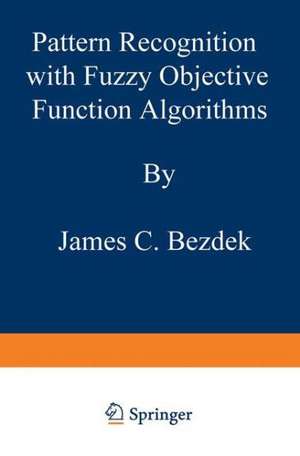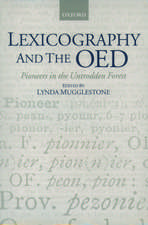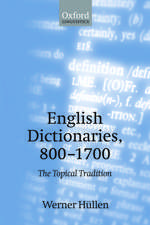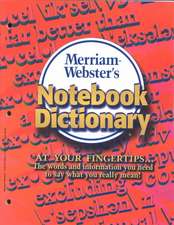Pattern Recognition with Fuzzy Objective Function Algorithms: Advanced Applications in Pattern Recognition
Autor James C. Bezdeken Limba Engleză Paperback – 20 mai 2012
Preț: 695.19 lei
Preț vechi: 817.88 lei
-15% Nou
Puncte Express: 1043
Preț estimativ în valută:
133.02€ • 139.26$ • 110.07£
133.02€ • 139.26$ • 110.07£
Carte tipărită la comandă
Livrare economică 05-19 aprilie
Preluare comenzi: 021 569.72.76
Specificații
ISBN-13: 9781475704525
ISBN-10: 1475704526
Pagini: 276
Ilustrații: 272 p.
Dimensiuni: 152 x 229 x 14 mm
Greutate: 0.37 kg
Ediția:Softcover reprint of the original 1st ed. 1981
Editura: Springer Us
Colecția Springer
Seria Advanced Applications in Pattern Recognition
Locul publicării:New York, NY, United States
ISBN-10: 1475704526
Pagini: 276
Ilustrații: 272 p.
Dimensiuni: 152 x 229 x 14 mm
Greutate: 0.37 kg
Ediția:Softcover reprint of the original 1st ed. 1981
Editura: Springer Us
Colecția Springer
Seria Advanced Applications in Pattern Recognition
Locul publicării:New York, NY, United States
Public țintă
ResearchCuprins
1. Models for Pattern Recognition.- S1 Pattern Recognition.- S2 Some Notes on Mathematical Models.- S3 Uncertainty.- 2. Partitions and Relations.- S4 The Algebra of Fuzzy Sets.- S5 Fuzzy Partition Spaces.- S6 Properties of Fuzzy Partition Spaces.- S7 Fuzzy Relations.- 3. Objective Function Clustering.- S8 Cluster Analysis: An Overview.- S9 Density Functionals.- S10 Likelihood Functionals: Congenital Heart Disease.- S11 Least-Squares Functionals: Fuzzy c-Means.- S12 Descent and Convergence of Fuzzy c-Means.- S13 Feature Selection for Binary Data: Important Medical Symptoms.- 4. Cluster Validity.- S14 Cluster Validity: An Overview.- S15 The Partition Coefficient: Numerical Taxonomy.- S16 Classification Entropy.- S17 The Proportion Exponent: Numerical Taxonomy Revisited.- S18 Normalization and Standardization of Validity Functionals.- S19 The Separation Coefficient: Star-Tracker Systems.- S20 Separation Indices and Fuzzy c-Means.- 5. Modified Objective Function Algorithms.- S21 Affinity Decomposition: An Induced Fuzzy Partitioning Approach.- S22 Shape Descriptions with Fuzzy Covariance Matrices.- S23 The Fuzzy c-Varieties Clustering Algorithms.- S24 Convex Combinations: Fuzzy c-Elliptotypes.- 6. Selected Applications in Classifier Design.- S25 An Overview of Classifier Design: Bayesian Classifiers.- S26 A Heuristic Approach to Parametric Estimation: Bayesian Classifiers for Mixed Normal Distributions.- S27 Nearest Prototype Classifiers: Diagnosis of Stomach Disease.- S28 Fuzzy Classification with Nearest Memberships.- References.- Algorithm Index.- Author Index.
















